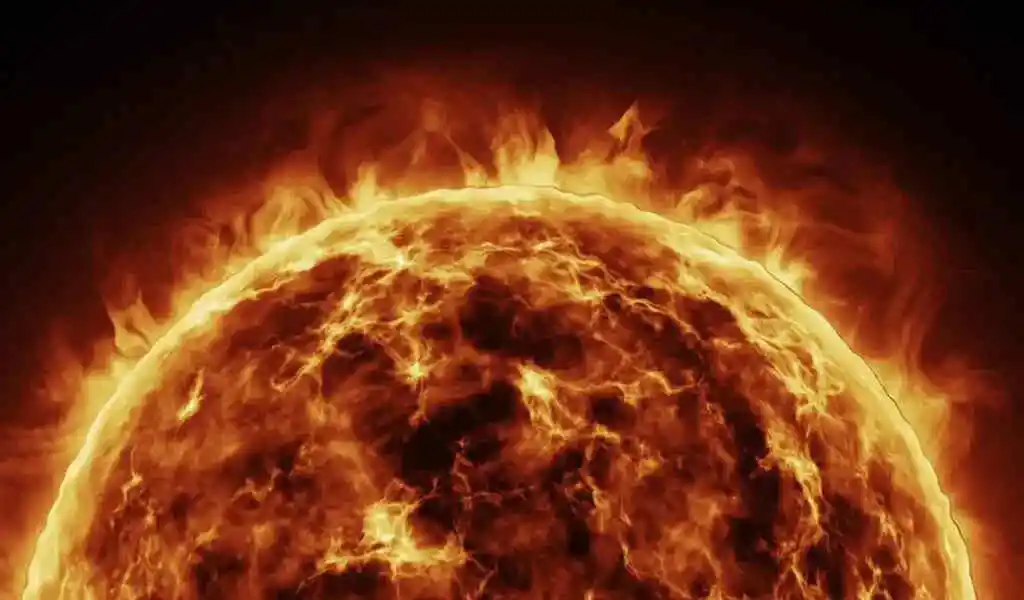(CTN News) – Because nuclear fusion does not use fossil fuels or emit harmful greenhouse gases, it could also help combat climate change.
Nuclear fusion – what is it?
It is nuclear fusion that generates the energy of the Sun.
Since the 1960s, scientists from more than 50 countries have been trying to recreate it on Earth.
There is hope that it will eventually be able to provide the world with huge amounts of clean energy.
During nuclear fusion, two tiny particles called atoms are heated and forced together to form one heavier particle.
Nuclear fission, which splits heavy atoms apart, is the opposite of this process. Electricity is currently generated by nuclear fission in nuclear power stations.
What is the importance of nuclear fusion?
Radiation produced by nuclear fission can be dangerous and must be safely stored for hundreds of years.
Nuclear fusion produces less radioactive waste and decays much faster.
The nuclear fusion process does not require fossil fuels like oil or gas. Additionally, it doesn’t produce greenhouse gases, which trap heat from the sun and cause climate change.
It is possible to extract hydrogen from seawater and lithium cheaply, which means that fuel supplies could last for millions of years in fusion experiments.
It has been called the “holy grail” of energy production.
Nuclear fusion: how does it work?
The chemical reaction between two atoms of a light element, such as hydrogen, and a heavier element, such as helium, produces enormous amounts of energy.
In reality, combining two identical elements is very difficult.
As two batteries with the same charge repel each other, they naturally repel each other.
Overcoming this resistance requires a lot of energy.
The Sun’s extremely high temperatures of around ten million degrees Celsius, as well as its significant pressure – 100 billion times that of the Earth – contribute to this phenomenon.
Scientists have attempted to recreate these conditions on Earth using a variety of different techniques.
The high temperature and pressure needed have proved very difficult to maintain.
It has been announced that the US National Ignition Facility (NIF) has successfully converted hydrogen into enough energy for 15 to 20 kettles by using a 192-beam laser.
For the first time, scientists generated more power than the lasers used in the experiment.
Can large-scale nuclear fusion be achieved in the near future?
Large-scale nuclear is still several years away, despite recent breakthroughs.
Even the successful NIF experiment in the US didn’t produce more energy than was needed to make lasers work in the first place – and the research programme to reach this point has cost billions.
In spite of the fact that physicists have welcomed the US results, they point out that there is still much work to be done before nuclear fusion can be used as a source of energy.
Efforts will now be directed towards reproducing fusion more quickly and economically.
Nuclear fusion: how safe is it?
The IAEA has deemed nuclear fusion “intrinsically safe.”
Fusion reactions cannot run out of control due to the extreme conditions required to start and maintain them.
IAEA’s Sehila González de Vicente explained that fusion is a self-limiting reaction. If the reaction can’t be controlled, it switches itself off.
As a result, the process produces significantly less radioactive waste compared to nuclear fission.
Is nuclear fusion a viable solution to global warming?
There are no greenhouse gases produced by nuclear, since it does not require fossil fuels like oil or gas.
Weather is not a factor in the production of this energy, unlike solar or wind power.
Lithium and hydrogen are relatively abundant materials on Earth.
By 2050, countries can achieve “net zero” emissions by utilizing nuclear on a wide scale.
Nevertheless, scalability of recent experimental successes will take many years.
SEE ALSO:
An Introduction to Software Development and Consulting






